Ancient Psychedelia: Alien Gods & Mushroom Goddesses
Online Book - Chapter 14, Page 279
Back to Online Book Mainpage / Next Page (Chapter 14, Page 280)
The “Trophy” symbol is also a symbol it seems, of the goddess Nike or Victory, but this time, it’s mushroom headed and standing on one leg (53d, e, f, g, i, j). These were Rome’s version of the mushroom goddess, only heavily watered down. 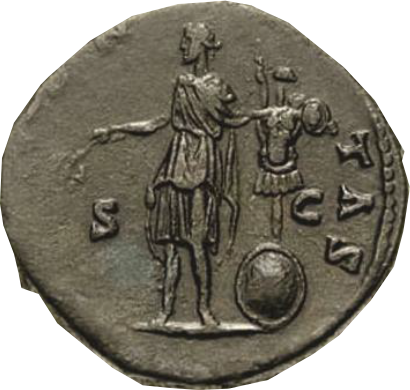 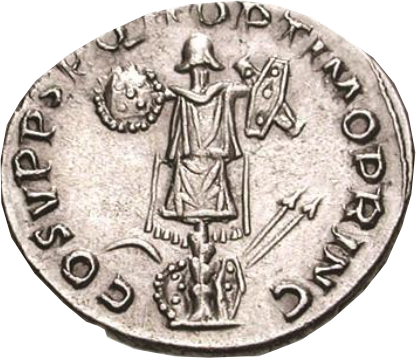 R: (53e) Trophy; weapons at its base c. 98-111 AD R: (53e) Trophy; weapons at its base c. 98-111 AD L: (53f) Trophy; seated captive on either side c. 193-210 AD 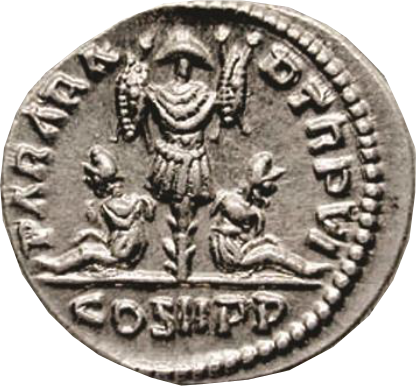 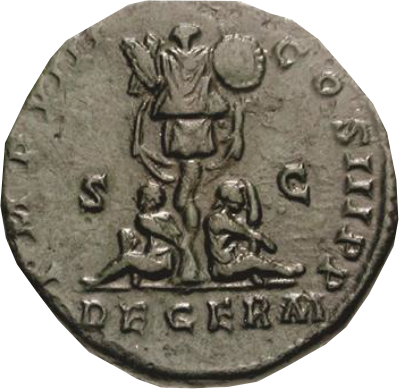 R: (53g) Trophy; seated captive on either side c. 145-175 AD L: (53i) Trophy c. 43 BC 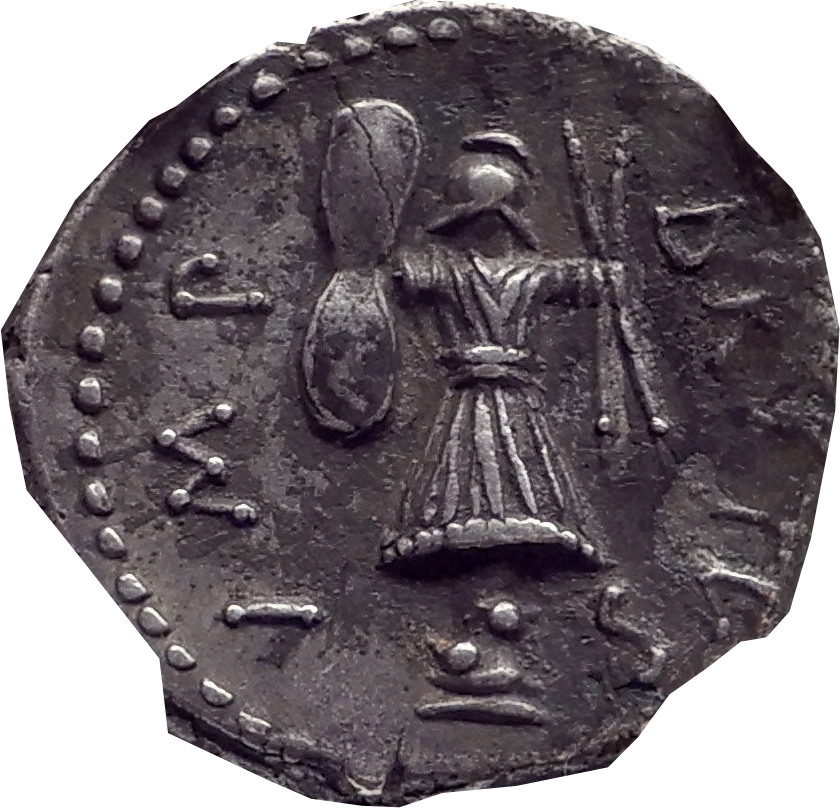 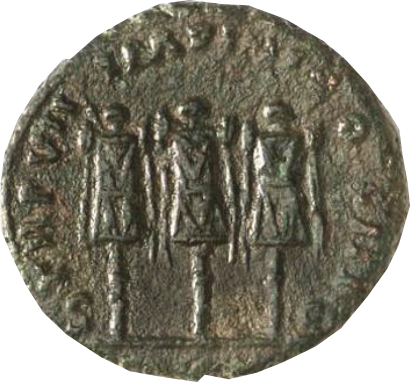 R: (53j) 3 Trophys c. 161-169 AD The trophy appears to have morphed slightly into what is called a “vexillum,” a flag-like object used as a military standard appearing on Roman coins c. 320 AD (53h, k, l, o). The vexillum on the coin from 320 AD (53h) looks very similar to the Hebrew version of the “parasol” on coins from Judea, c. 37-44 AD (51e) which appear to show spores about to drop. |
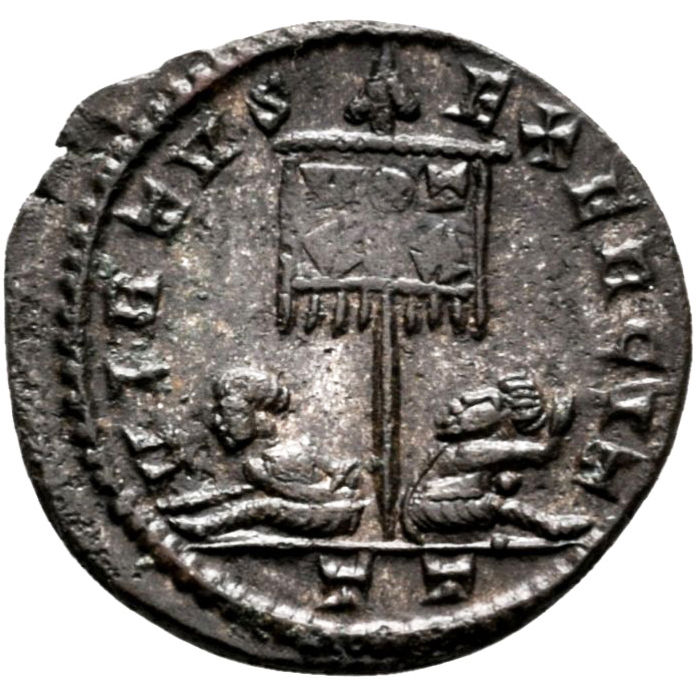 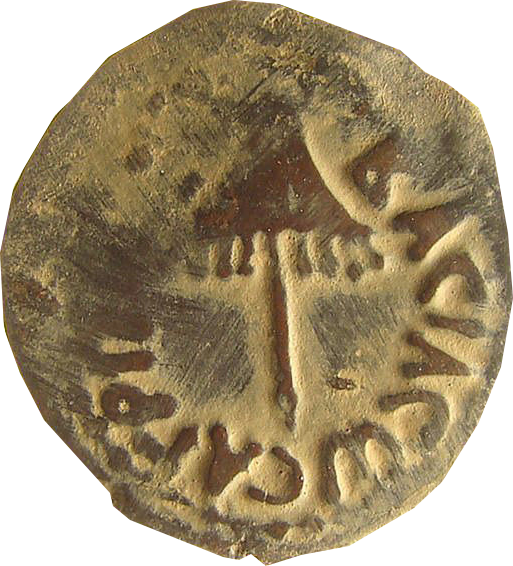 R: (51e) Judean Agrippa I c. 37-44 AD L: (53k) Vexillae (3); center vexillum with shield 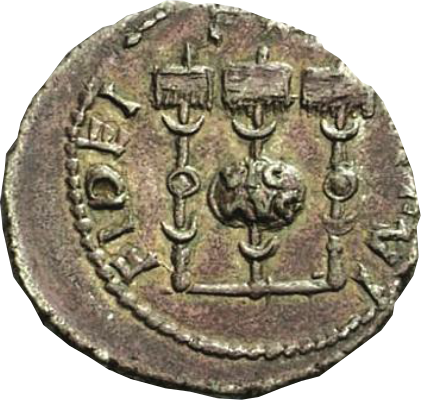 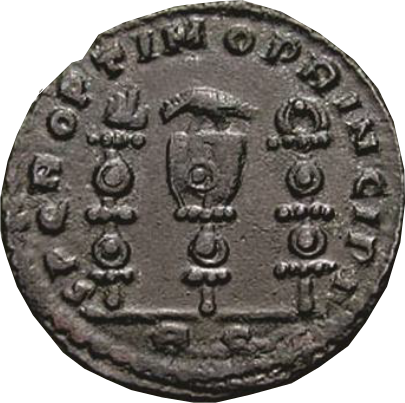 R: (53o) 3 Standards c.311-321 AD L: (53l) R: Chi Rho atop Roman military standard serpent below 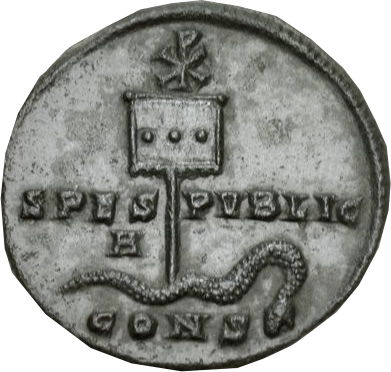 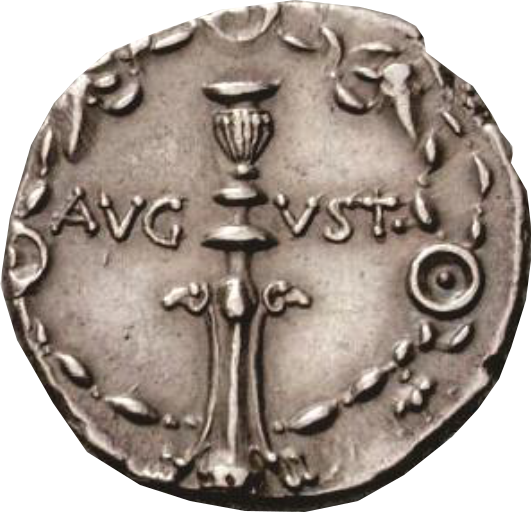 R: (53p) c. 17 BC We also see “pillars” on Greek and Roman coins, c. 100-50 BC (50c), which resemble the pillars we see on Harrapan seals from 1280 BC (12b, c). Another kind of pillar or altar is shown on coins, c. 17 BC (53p), and Greek Apulian amphoras, c. 370 to 360 BC (47e). 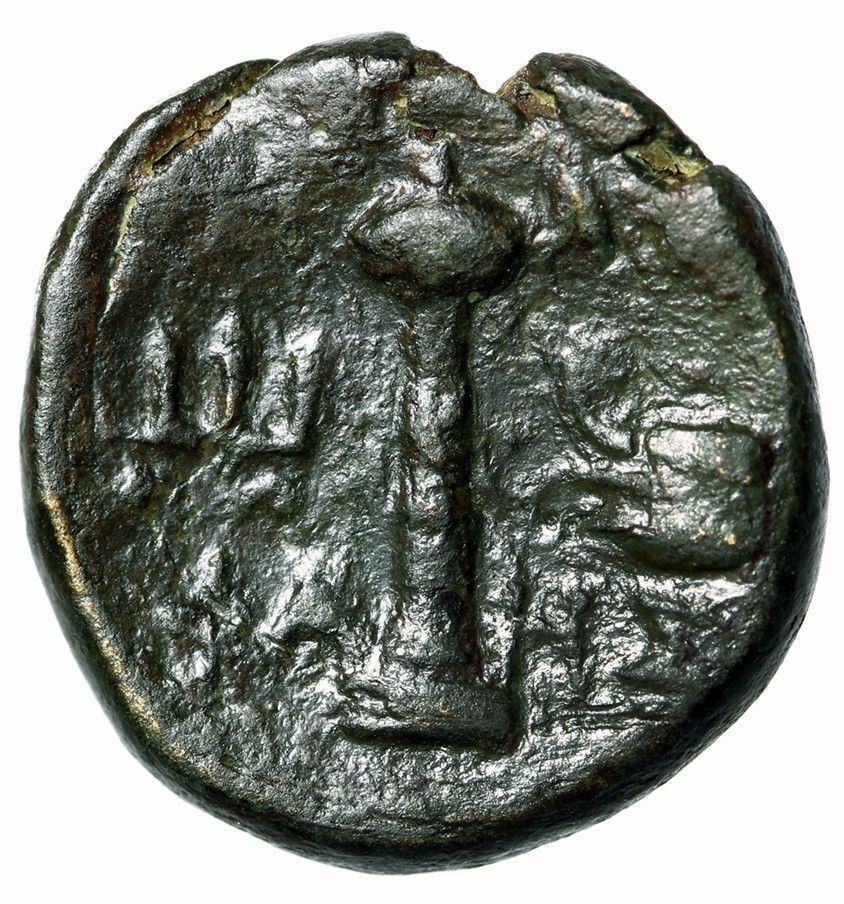 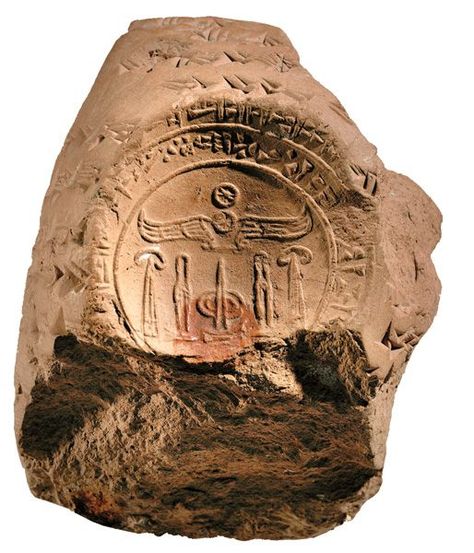 R: (12c) Hittite Seal of Tudhaliya IV c. 1237–1228 BC |
Go Back to Page 278